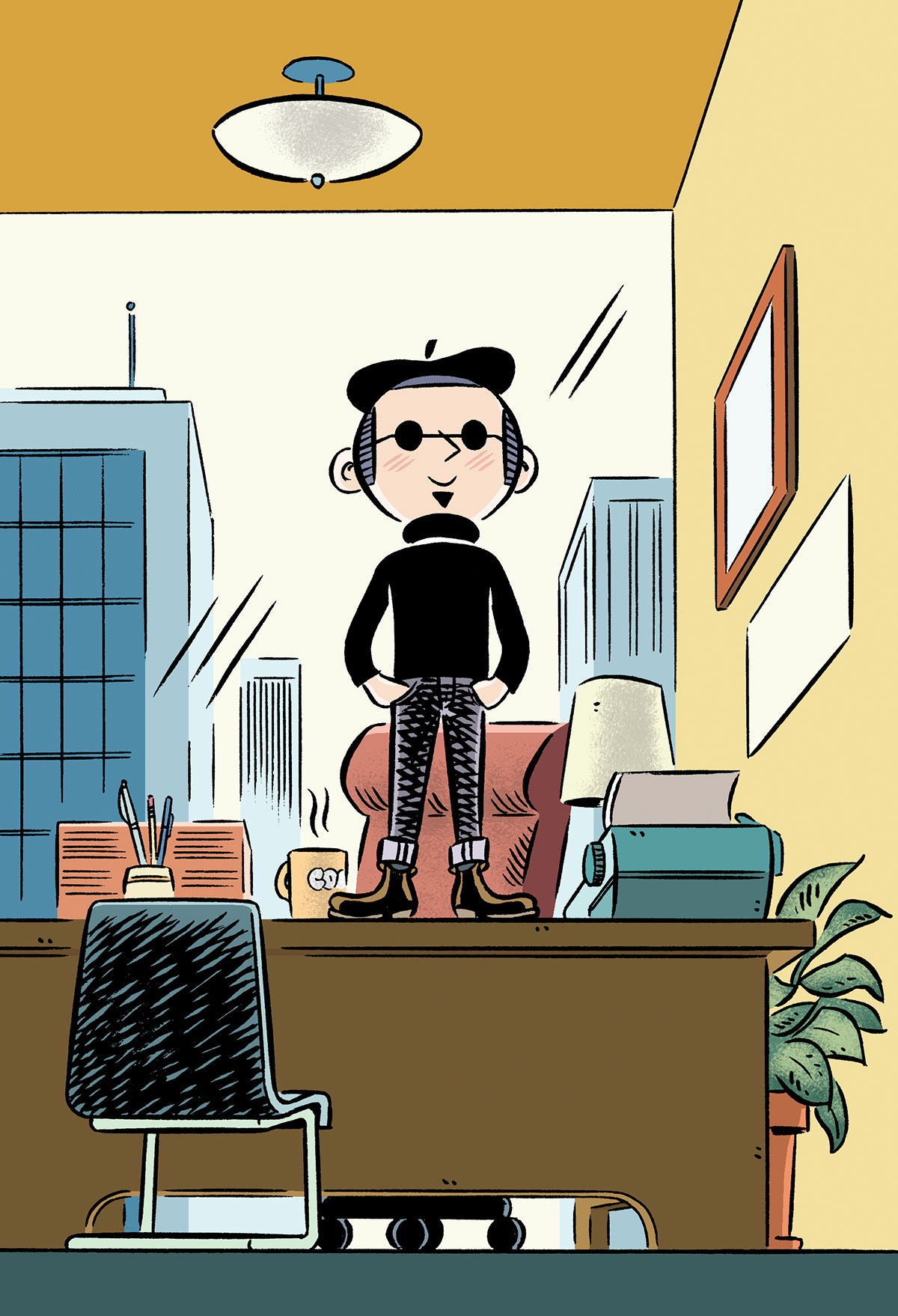
Late last year, Taddle Creek, in quick succession, received possibly the two greatest letters ever to grace its e-mailbox. Both were from Kieran Dunn, of Guelph, Ontario, who wrote: “I have just finished reading ‘Starseed,’ by Peter Darbyshire, in the summer issue of Taddle Creek (No. 43). I was perplexed by the following passage: ‘The interior of that starship was indescribable by the likes of me. Perhaps Gernsback and his fellow science fictioneers could manage it, but it is beyond me.’ While I appreciate the homage in this ‘celebration of the . . . pulp magazine,’ I have to wonder when this story is meant to take place. The Battle of the Somme, the concluding event in the story, was fought in 1916. Amazing Stories, Hugo Gernsback’s first foray into what we now call science fiction, was not founded until 1926. It seems unlikely that the narrator, Archimedes Death, would be writing later than 1926 and, thus, unlikely he would refer to Hugo Gernsback as a ‘science fictioneer.’ I would be interested to hear your take on this.” A mere two hours and thirty-five minutes later, Kieran posted a follow-up: “My apologies—I have found a story written by Gernsback that would easily explain the reference: ‘Baron Münchhausen’s New Scientific Adventures,’ published in The Electrical Experimenter, March, 1916.” Taddle Creek did, for good measure, run all of this past the author, to which Mr. Darbyshire replied, “Clearly, the history of Alphaman cannot be trusted. The hidden truths are everywhere. And you think I have actually taken to the stars. Fools.” Taddle Creek is sure someone regrets something in this case, but it is not sure who or what.
Proving that it’s never too late to be correct, Taddle Creek offers two corrections to Alfred Holden’s profile of the composer Percy Faith, “The Streamlined Man,” originally published in Taddle Creek No. 4. In the story, the author states, “Midway through the show, while directing the orchestra from the piano, playing his million-seller hit ‘Theme from A Summer Place’—written by veteran Hollywood composer Max Steiner and arranged by Faith for the 1959 movie—Faith turns to the camera and shrugs.” Although Faith’s version of this song is the aforementioned million-selling hit, Hugo Winterhalter’s version of Steiner’s song is the one that actually appears in the film. Alfred admits to having made an assumption—the fact checker’s greatest enemy—and both he and the magazine regret the error.
In that same profile, the author states, “When Faith died of cancer in Los Angeles on February 9, 1976 (too many of his Columbia album covers showed him smoking while in the studio), the Toronto Star’s Dennis Braithwaite would write, ‘an exploiter rather than a creator, Percy Faith can’t be said to have advanced the popular music of his time.’” Although Alfred does not implicitly state Faith died of lung cancer, it was implied. The reader and Faith aficionado Bill Halvorsen wrote in to let Taddle Creek know this was not the case. What type of cancer Faith died from remains a mystery, but readers should not make the same assumption the magazine did. Taddle Creek regrets the vagueness and the cigarettes.
Speaking of stories with longevity, Alfred Holden’s history of Toronto’s Dupont Street, “Dupont at Zenith,” from Taddle Creek No. 2, remains the most-viewed story on the magazine’s Web site, nearly twenty-two years after its publication. In it, Alfred pays tribute to this industrial strip, whose businesses were so vital to both city and country: “Dupont Street in Toronto at the close of the twentieth century is an open graveyard of such industries, most of which collapsed without so much as a pauper’s funeral. Their skeletons lie exposed. They are the parking lots, warehouse loft condos, and retail joints of the post-industrial age.” With Dupont now becoming yet another once-affordable area of Toronto soon to be priced out of reach for many, Taddle Creek feels some unease to see itself quoted in the pages of a promotional pamphlet for the Bianca, a luxury condo rising on the former site of the Mono Lino Typesetting building: “In a 1998 essay about Dupont Street, in Taddle Creek Magazine, Toronto Star journalist Alfred Holden examines the influence the area had, with a factory like Hamilton Gear providing gears for the St. Lawrence Waterway, the moving roof of the Toronto SkyDome (now Rogers Centre) and cockpit of Canada’s Avro Arrow airplane.” Taddle Creek regrets being part of the problem.
Finally, Taddle Creek recently took a stroll along the Toronto waterfront and did a double take upon spying two Expo 67 benches just west of the Palais Royale. These benches, part of Canada’s contribution to the 1967 world’s fair, have played a recurring role in the historical writings of Alfred Holden (him again?), most recently in the memoir “A Man and His World,” from Taddle Creek No. 40. How long the benches have sat in this location the magazine doesn’t know, nor does it know if they are the same benches that once could be found in Queen’s Park and went missing some years ago. In any case, it was an exciting discovery, to say the least. Alfred’s Annex Gleaner column about the benches, originally published in 1997, is now available on the Taddle Creek Web site.